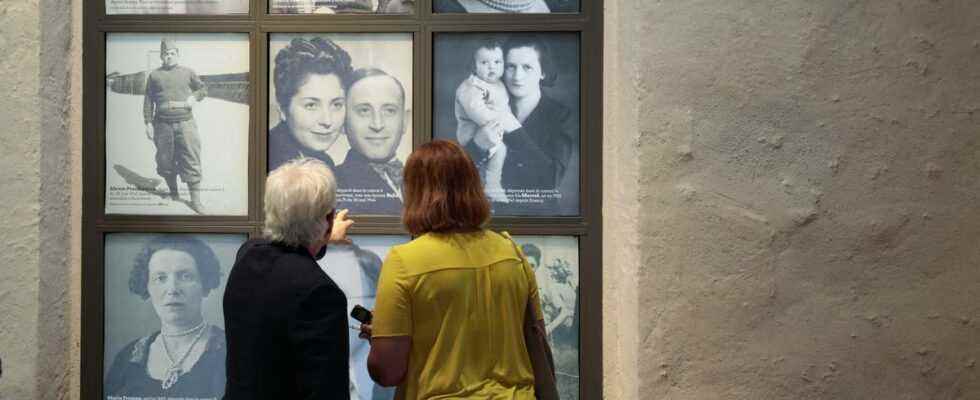The site, laid out by the Mémorial de la Shoah, should make it possible to understand the past and shed light on the present, “in the face of the rise of anti-Semitism, racism and conspiracies”.
A station as a witness to the horror of the Nazis: the Shoah Memorial is to inaugurate a new place of memory on Sunday in the former station of Pithiviers (Loiret), from which eight convoys left for Auschwitz-Birkenau. “This station is the place where the French event becomes European genocide. (…) It is a place of memory unique in France»launched Jacques Fredj, director of the Shoah Memorial, which intends the place “mainly to schools”. This place of memory is to be inaugurated on Sunday July 17 on the occasion of the 80th anniversary of the Rafle du Vel d’Hiv (July 16-17, 1942).
With this site of 400 m2which still belongs to the SNCF, the Memorial wishes “strengthen work” of the Center for Study and Research on the Loiret Internment Camps (Cercil). “It is a priority in the face of the rise of anti-Semitism, racism and conspiracies. (…) There is work to be done with the students: what have been the consequences of racism in history?” says Jacques Fredj.
SEE ALSO – 80 years of the Vél’d’Hiv roundup: “Our country must look its history in the face”, declares Élisabeth Borne
8000 deportees
From Pithiviers station, eight convoys left for the extermination camps, for more than 8,000 deportees. This station was thus the second French deportation site after that of Drancy (Seine-Saint-Denis). A total of 16,000 Jews were interned in the neighboring camps of Pithiviers and Beaune-la-Rolande between 1941 and 1943.
A room in the station is devoted to a poignant photo report, almost minute by minute, of the so-called roundup of the “green ticket”, the first mass arrest of Jews in France. The French police had summoned and arrested 3,700 foreign Jews on May 14, 1941. They were then sent to the two Loiret camps, before forming the first convoy to Auschwitz-Birkenau in March 1942, in order to empty the premises before the big roundups of the summer. “What happened here is directly linked to the Vel d’Hiv roundup” in July 1942, insists Olivier Lalieu, the curator of the exhibition.
Another room traces “the litany of the eight convoys” to Auschwitz-Birkenau. One by one, the trains are displayed, with the administrative documents reproduced: police reports, from the prefecture, requisition of the gendarmes, preparation of the wagons, etc. This highlights the role of stations, “memory blind spot”. Opposite, on giant screens, the photos of the murdered deportees are revealed, train by train, details Olivier Lalieu, for “to resuscitate the human (…) behind the figures”.
